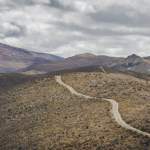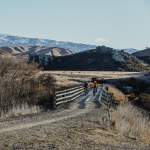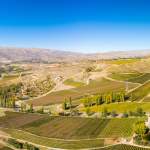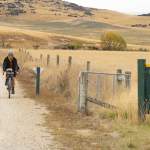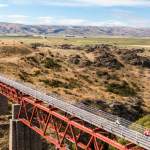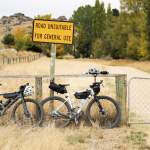
A Fine Dam Tour
Without the construction of the Clyde Dam there would be no Lake Dunstan.
Ergo, there would be no Lake Dunstan Trail. The Dam is an iconic landmark of both the Lake Dunstan Trail and is also close to the start of the Otago Central Rail Trail, but most cyclists and walkers on these trails don’t realise that tours of the dam are available to the public.
- words and pictures by Geoff Marks
It’s a cold, damp May evening and the TV weatherman has predicted a frigid southerly to grip New Zealand bringing the lowest temperatures of the year so far. Demand for power has spiked and all four turbines of New Zealand’s third biggest hydroelectric dam are cranking.
I’m standing in the control room, the nerve centre of the Clyde Dam, surrounded by huge TV screens with data, graphs and dashboards constantly flickering with real-time updates on the market demand and price for electricity as well as power generation and performance metrics from the dam.
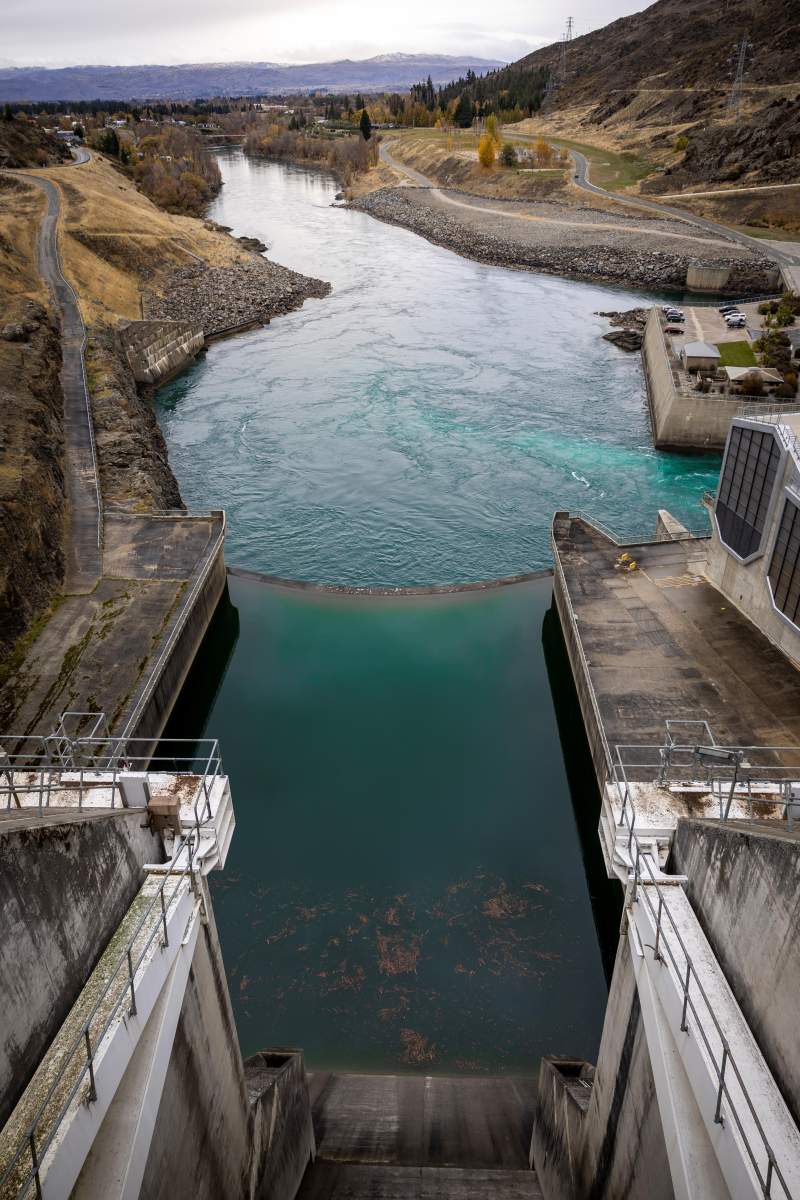
View from the top of the Clyde Dam looking southeast towards Clyde along the Clutha River.
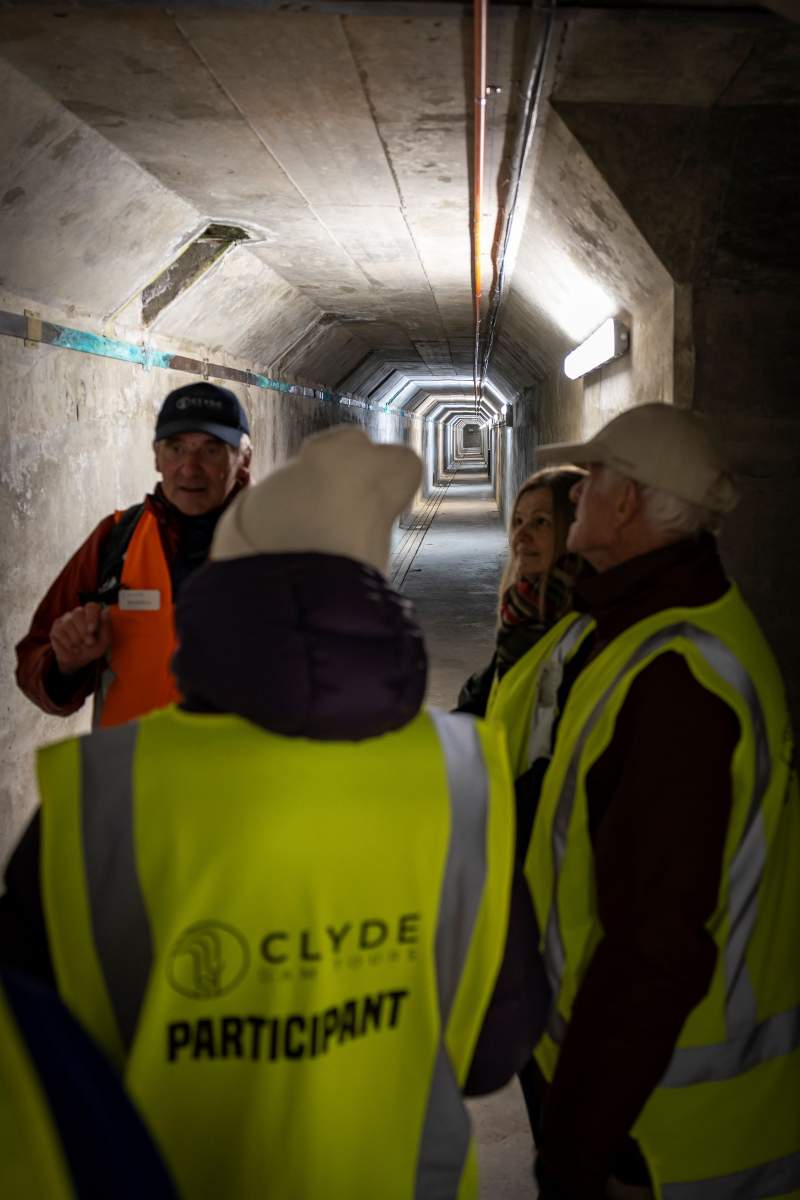
A tour of the Clyde Dam takes you deep inside NZ's largest concrete dam.
Russell, our guide on this access-all-areas tour of the dam, explains that he’s never seen electricity demand come so close to outstripping supply, and with the weather bringing very light winds the power generated by the country’s wind turbines (approx. 5% of total generation) means that New Zealand is running very close to a power shortage.
Clyde Dam produces almost 9% of NZ’s peak electricity demand and this evening every watt, let alone megawatt, from the dam is needed.
“That’s the challenge with renewable energy”, says Russell. “We’re subject to Mother Nature and the weather. Unless is windy, the sun is shining or there’s rain to fill up the hydro lakes then there’s no means to generate electricity”, he explains.
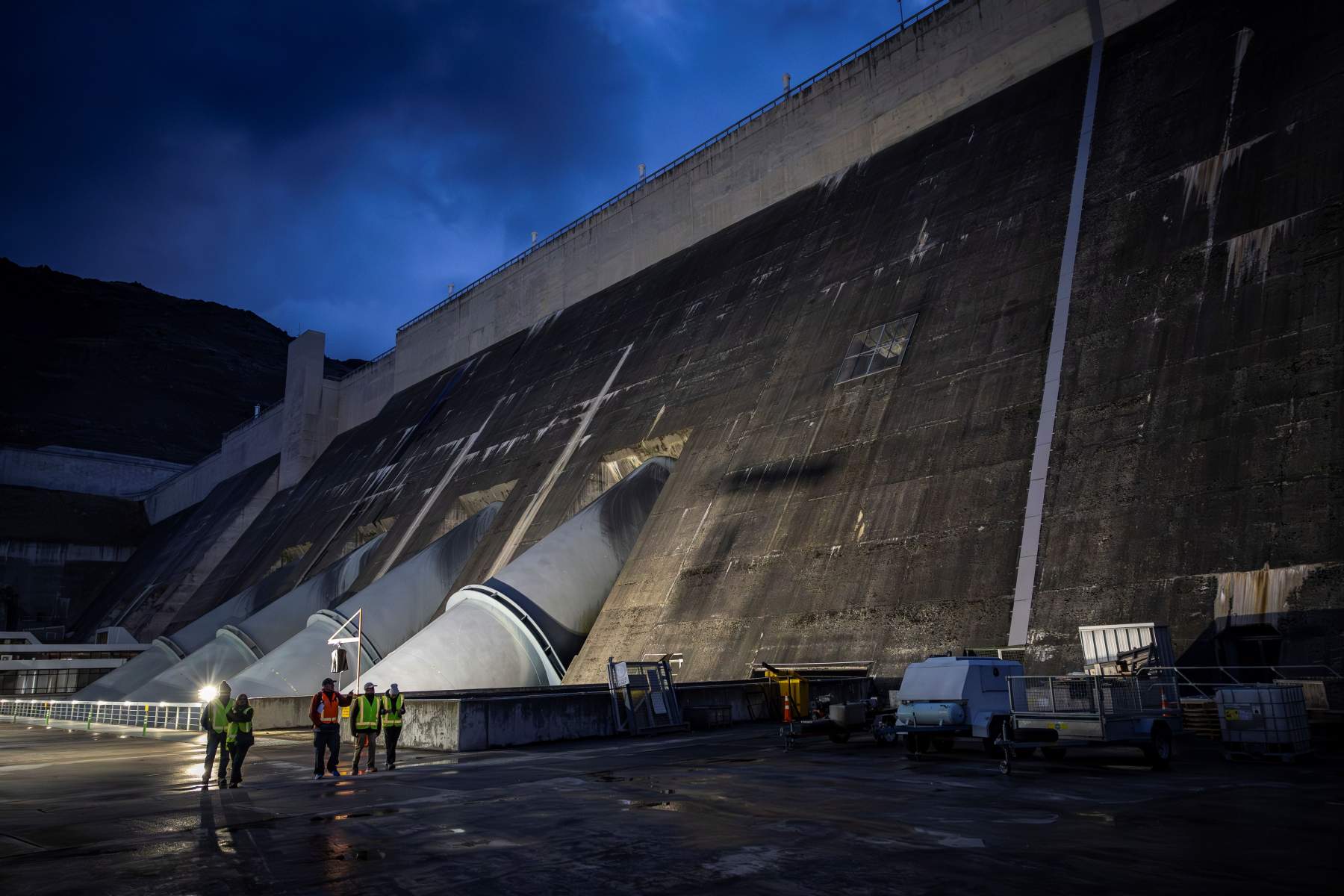
A tour of Clyde Dam on a cold, wet winter's evening with electricity at peak demand.
Russell, part engineer, part schoolteacher, part historian and 100% raconteur is a Clyde local and has been running tours to the Dam since they began. Constructed between 1977 and 1989, Clyde Dan was finally commissioned in 1992 and can produce 432 megawatts of power from its four huge turbine generator units.
Moving on from the warmth of the control centre and into the cavernous innards of the dam itself, Russell explains that over a million cubic metres of concrete was used in the construction of the dam with another 200,000 cubic metres for the powerhouse. It’s New Zealand’s largest concrete dam.
“The surface of the lake is 49m above us at this point, and 5.5m behind this concrete wall”, Russell gleefully explains as cold water* ominously drips from above and onto our heads, “and the dam is actually built in two separate pieces with a 2m gap in between”….
A 2m gap?... None of my tour companions seem particularly thrilled at this new piece of information given we are currently some 40-odd metres underwater!
*(Probably just condensation, according to Russell)…
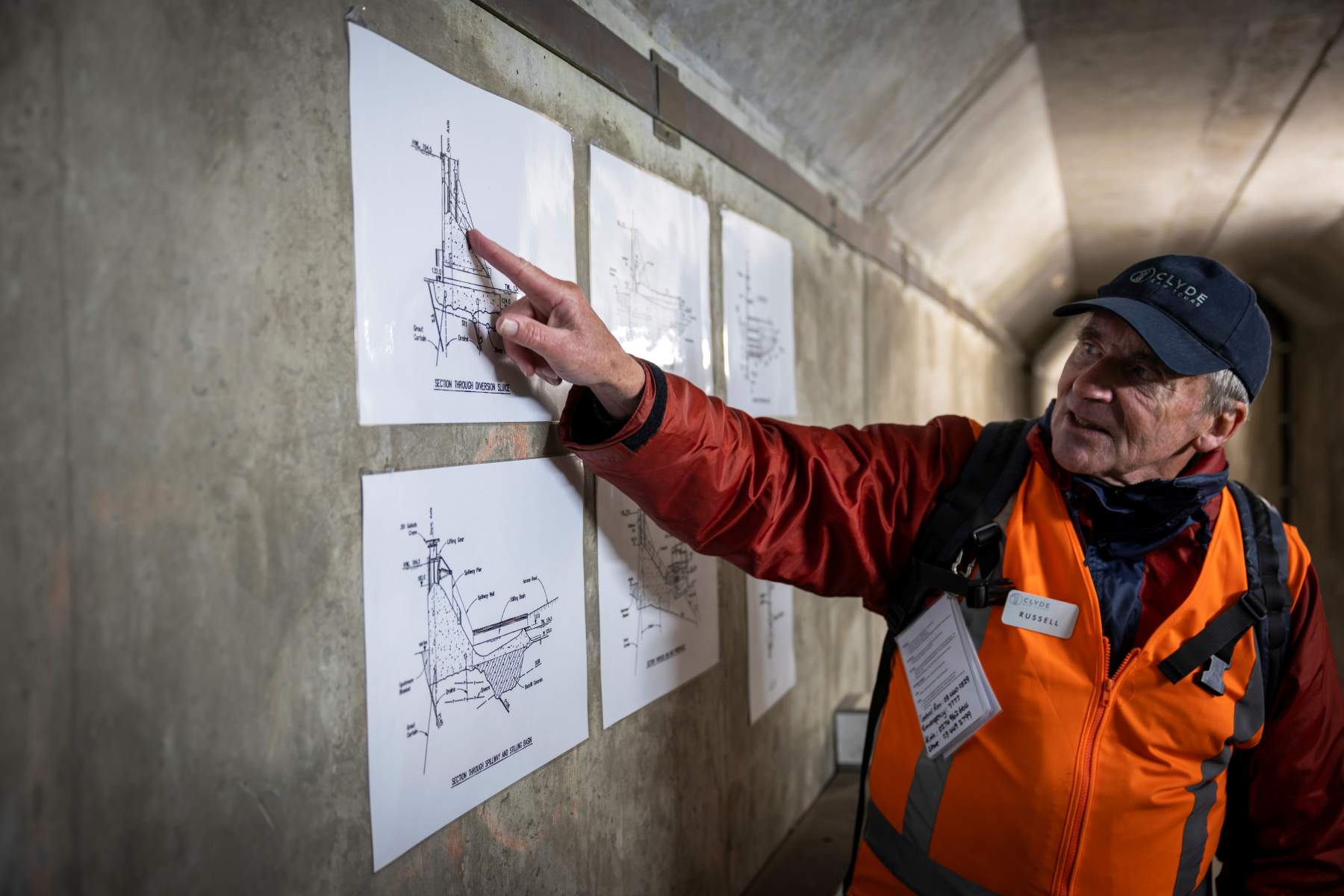
Part engineer, part schoolteacher.... 100% raconteur!
At this juncture, clearly used to playing on visitor’s natural concerns about being confined within the walls of a dam and underwater, Russell continues to explain that the dam is built on an active fault line! The Dunstan Fault.
“But don’t worry”, he chortles, “the dam is designed to withstand up to 10x the magnitude of any movement estimated at the fault – which would be greater than 7 on the Richter scale”.
Somewhat more reassuringly, Russell explains that there has been absolutely no movement in the dam since the lake was filled.
Phew.
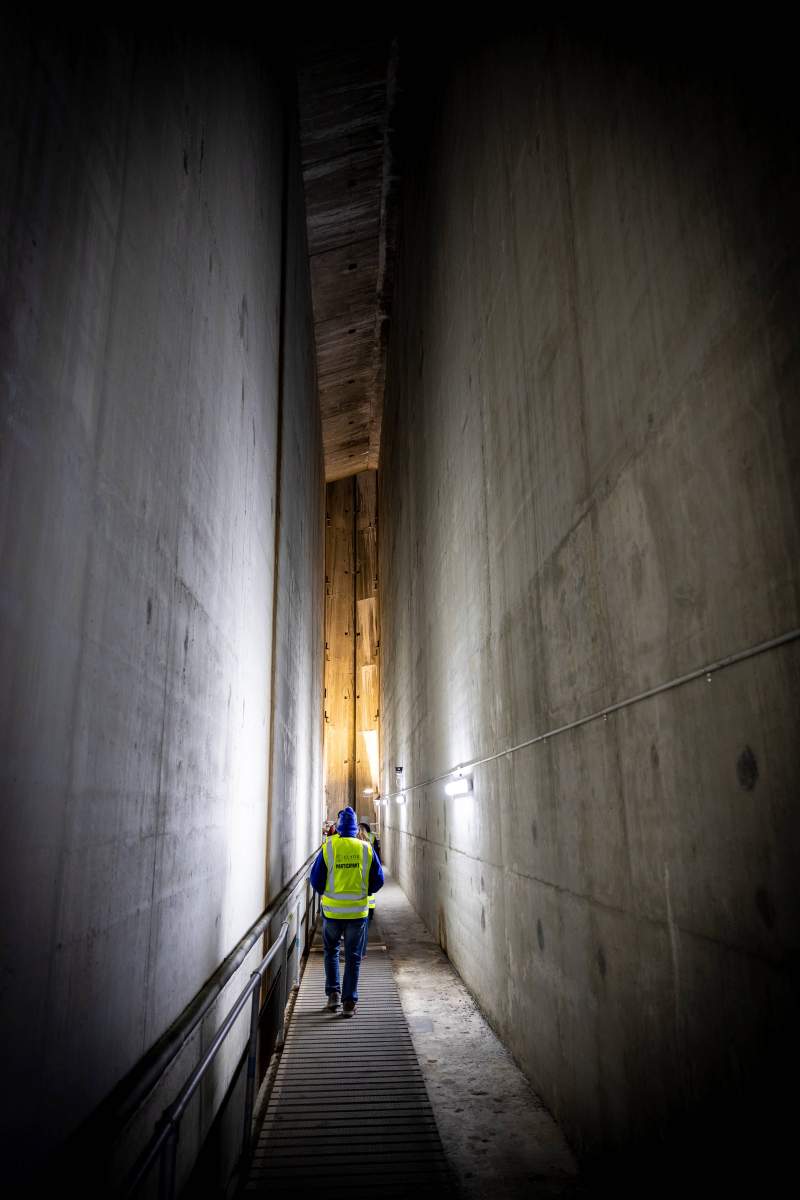
The cathedral like qualities of Clyde Dam's slip joint.
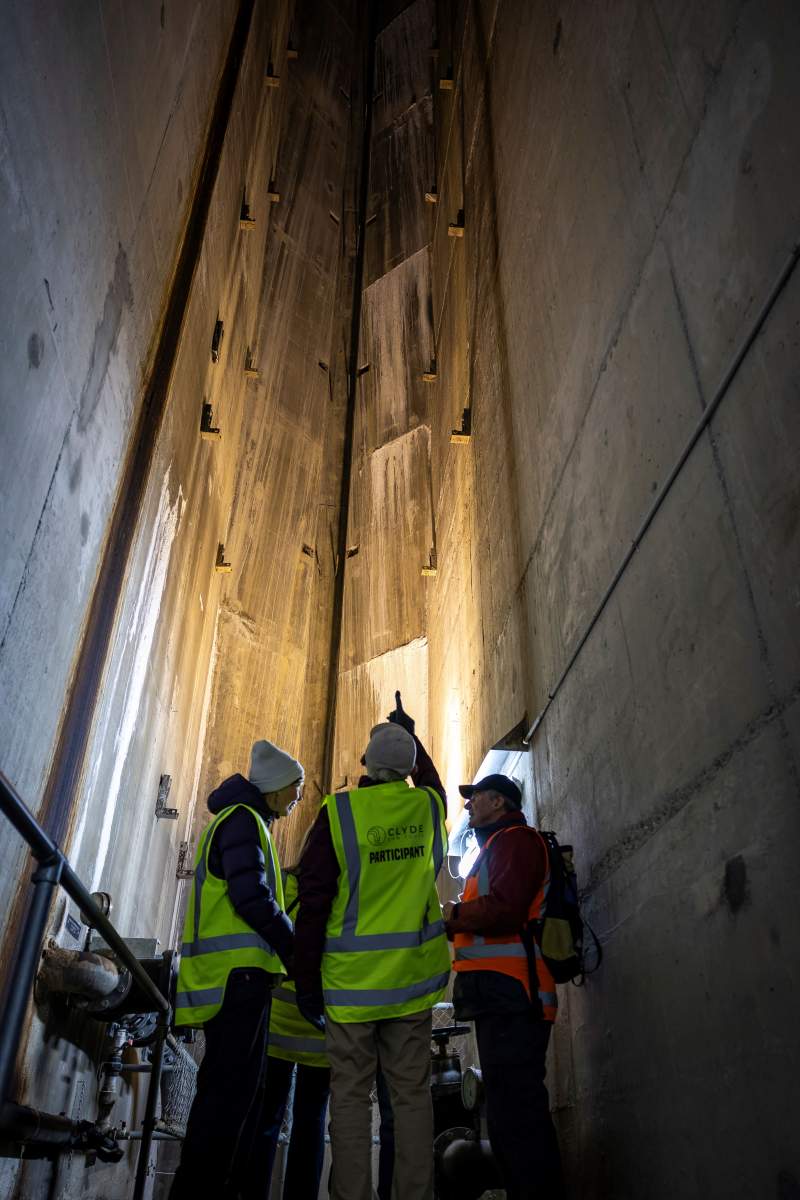
It's advisable to have faith in the science and engineering of the Clyde Dam!
Less reassuringly, he then takes us to explore the Clyde Dam’s slip joint – a “floating plug” which seals the 2m gap between the two sections of dam.
“The slip joint is designed to accommodate any small movements in the fault without causing serious damage to the dam”, says Russell. “The slip joint is located directly above the fault and is sealed watertight by a concrete wedge plug, that’s held in place by the force of water behind it…”
“In the case of any movement in the fault, the main blocks of the dam either side of the slip joint are able to move, whilst the plug ensures the dam remains watertight”.
At this point, I decide to have faith in the science. And anyway, it’s impossible not to marvel at the cathedral-like grandeur of the slip joint’s construction.
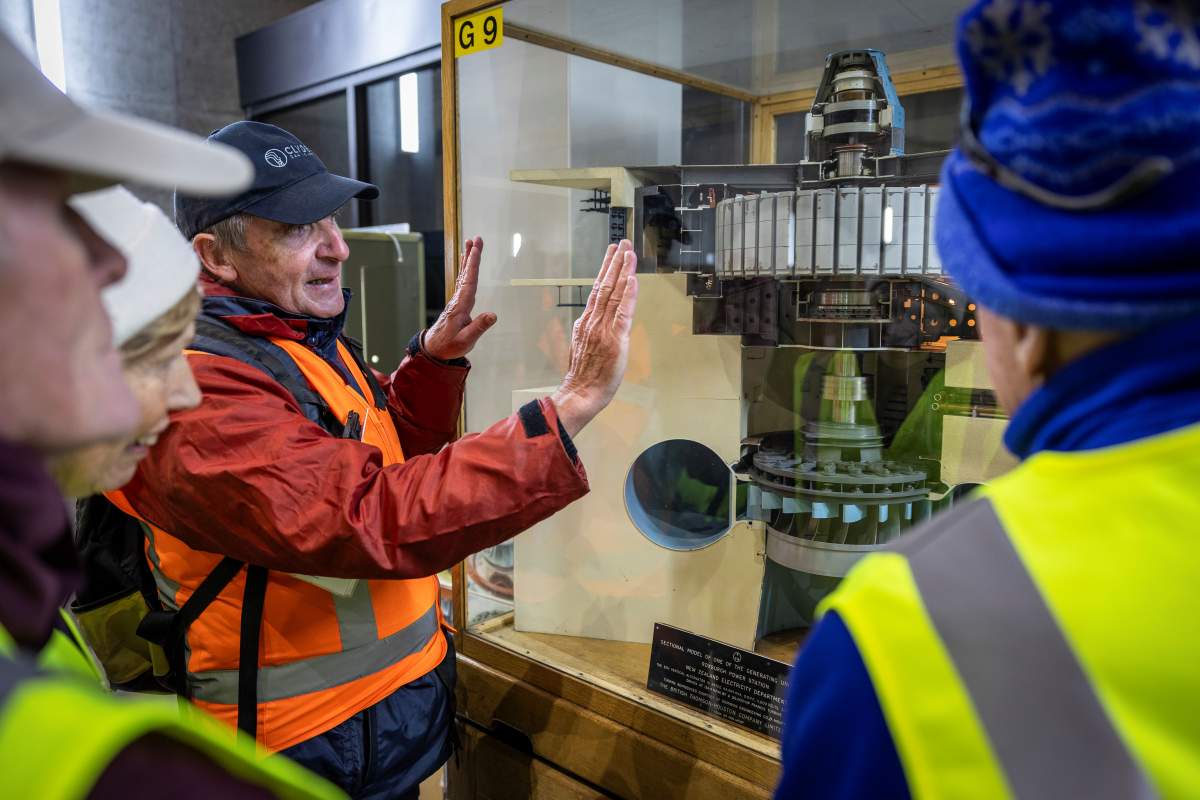
A hands-on lesson in hydro electricity generation - Clyde Dam's powerhouse.
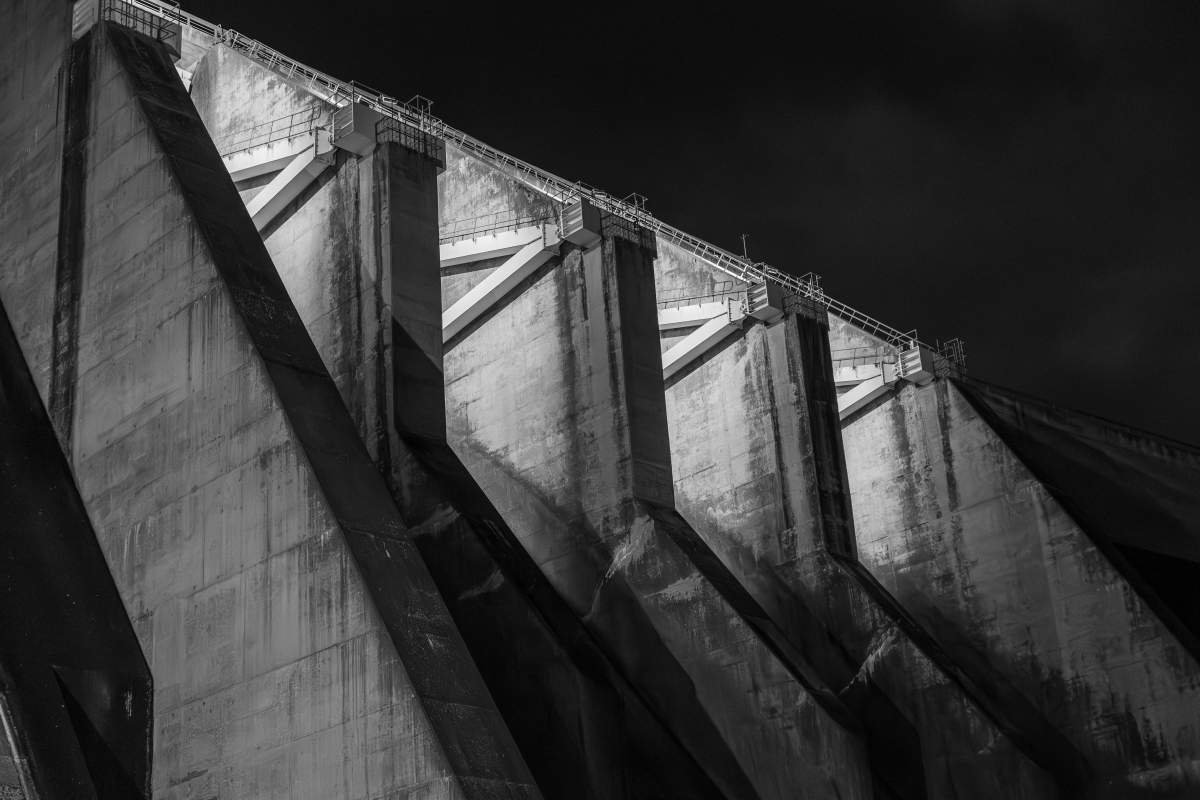
Over a million cubic metres of concrete was used in the construction of the Clyde Dam.
Moving back to terra firma, the tour concludes in the powerhouse and a detailed examination of the turbines and generators. By now, it’s dark outside and it’s evident that we’re the only people onsite – other than the skeleton crew in the control room. We all comment on what a rare privilege it is for Contact Energy to allow public access to this incredible facility on what has been a truly unique and fascinating experience.
At the time of construction, the Clyde Dam was considered controversial by some people, largely because it flooded houses and orchards upstream and the scenic Cromwell Gorge. We also learned from Russell that the dam has caused challenges for native fish species (especially longfin eel and lamprey) but Contact Energy - which operates the dam - have a dedicated native fish management project to support the upstream and downstream passage of these native fish. You can find out more about this project by watching this great video.
Today the Clyde Dam is an essential component of New Zealand’s infrastructure and on cold winter days it’s obvious that the dam is critical to help keep the country’s lights on.
Clyde Dam has also generated new opportunities for recreation and tourism including boating and fishing, as well as the development of the Lake Dunstan Trail, now one of New Zealand’s favourite cycle trails.
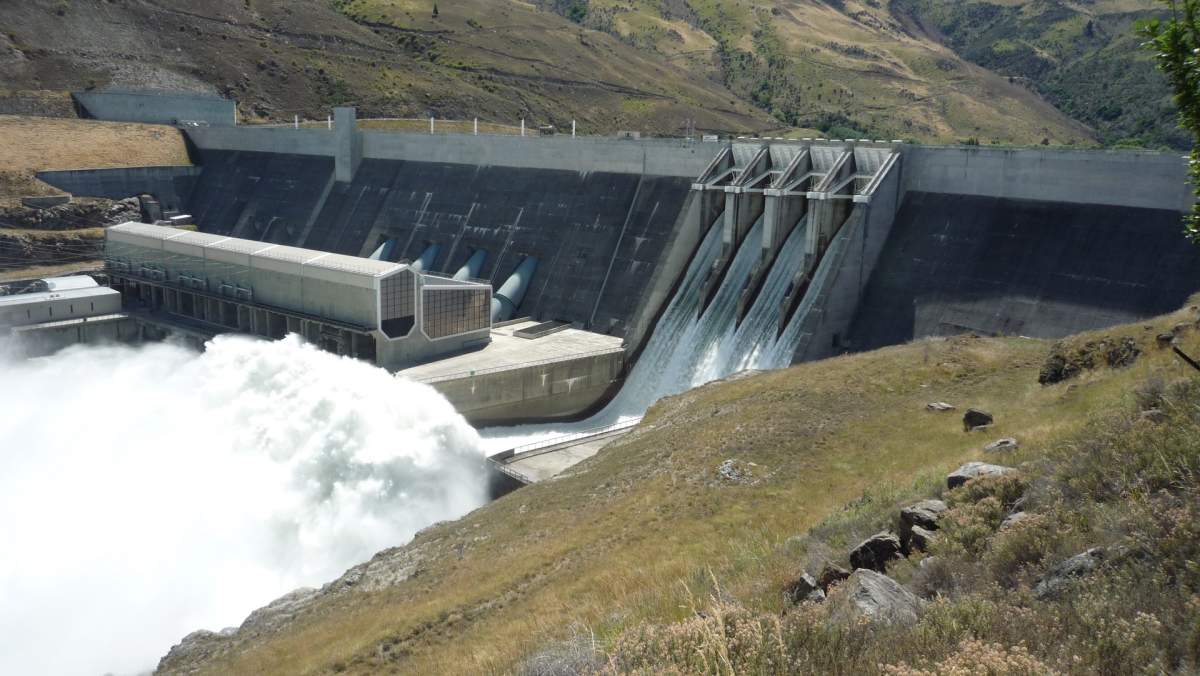
The Clyde Dam in full flow.
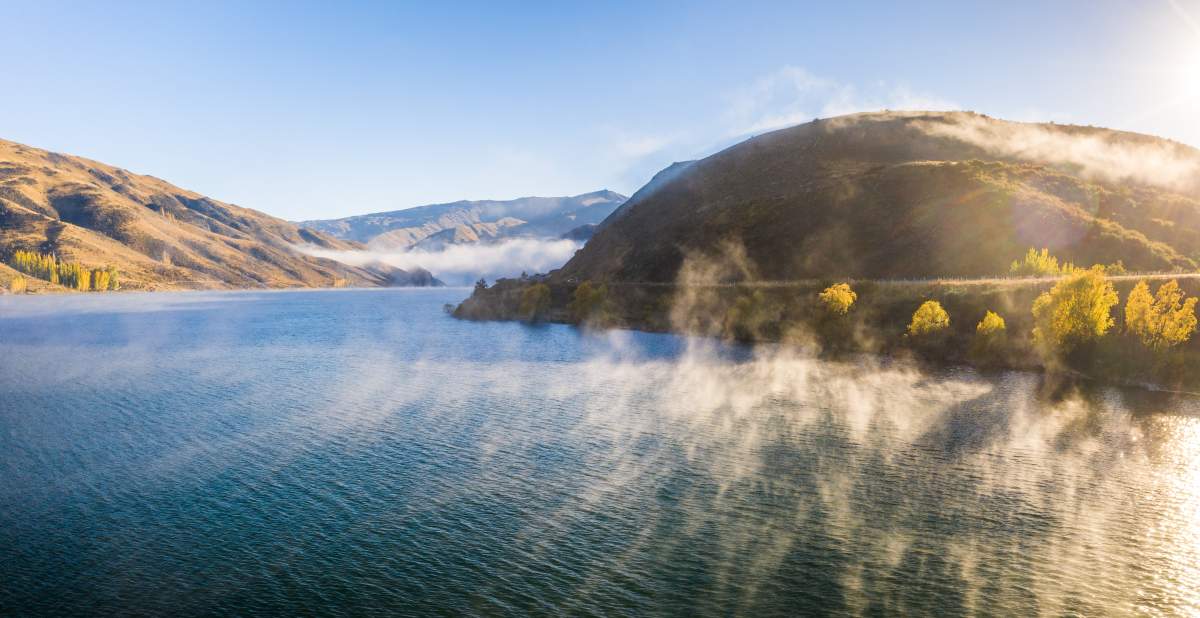
The breathtaking Lake Dunstan, formed by the construction of the dam which was commissioned in 1992.

Related Stories
-

Hawksburn - Thomsons Gorge Gravel Bike Double
An epic 12hour, 210km gravel bike mission through Central Otago.
Read more about Hawksburn - Thomsons Gorge Gravel Bike Double -

One Day Winter Wonders
The best bike rides on the Otago cycle trails in winter.
Read more about One Day Winter Wonders -

Trail Tipples
Exploring Otago Wine Country on New Zealand’s Best Cycle Trails.
Read more about Trail Tipples -

Best Bakeries in Otago
From cinnamon scrolls to cheese rolls - a guide to the best trailside bakeries in Otago.
Read more about Best Bakeries in Otago -

25 Years On Track
The old and the new - celebrating 25 years of the Otago Central Rail Trail
Read more about 25 Years On Track -

Neat Trail Places
An insider's guide to the neatest places along Central Otago's bike trails.
Read more about Neat Trail Places -

-

Otago Central Rail Trail Pub Guide
A guide to the pubs along the Otago Central Rail Trail
Read more about Otago Central Rail Trail Pub Guide -

Beginners Guide to the Otago Central Rail Trail
A beginner's guide to the Otago Central Rail Trail
Read more about Beginners Guide to the Otago Central Rail Trail -

Reclaiming Wild
Two gutsy girls on an epic bikepacking mission to celebrate their 50th birthdays.
Read more about Reclaiming Wild



